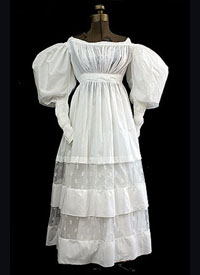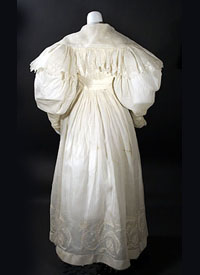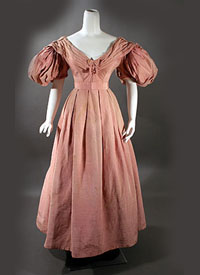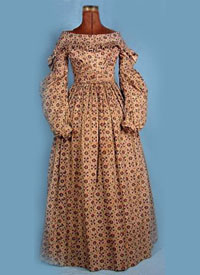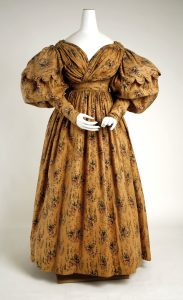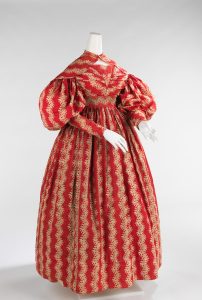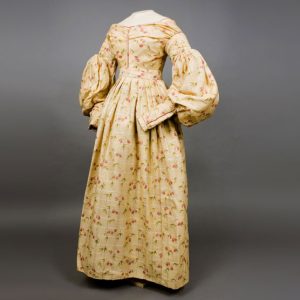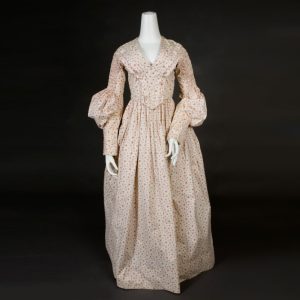In the 1830s, the first cross-cut Gigot, or Leg O’ Mutton, sleeves appeared. The previous shoulder fullness dropped toward the elbow, and sleeves became enormous. The waist resumed its natural position, while necklines became very wide. Bodice lines took on a distinctive V-shape. Ankle-length skirts became quite full and needed several petticoats underneath for support. This produced the 19th-century’s first version of an hourglass silhouette.
As often happens, when one fashion change occurs, the need for another is created. The very full sleeves that were in vogue demanded alternative outerwear. It was difficult to force these large sleeves into coats, so cloaks were worn. Short capes with longer front ends, called pelerines, become quite popular, as did chemisettes (under-bodices of net or lace) for low-necked gowns. The focus was on femininity. Aprons were popular accessories.
Written by The Vintage Fashion Guild
